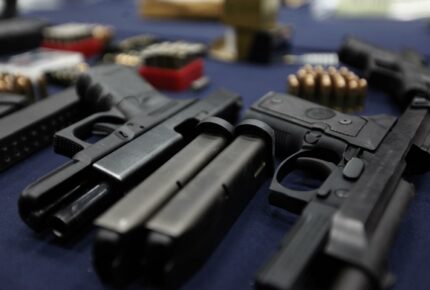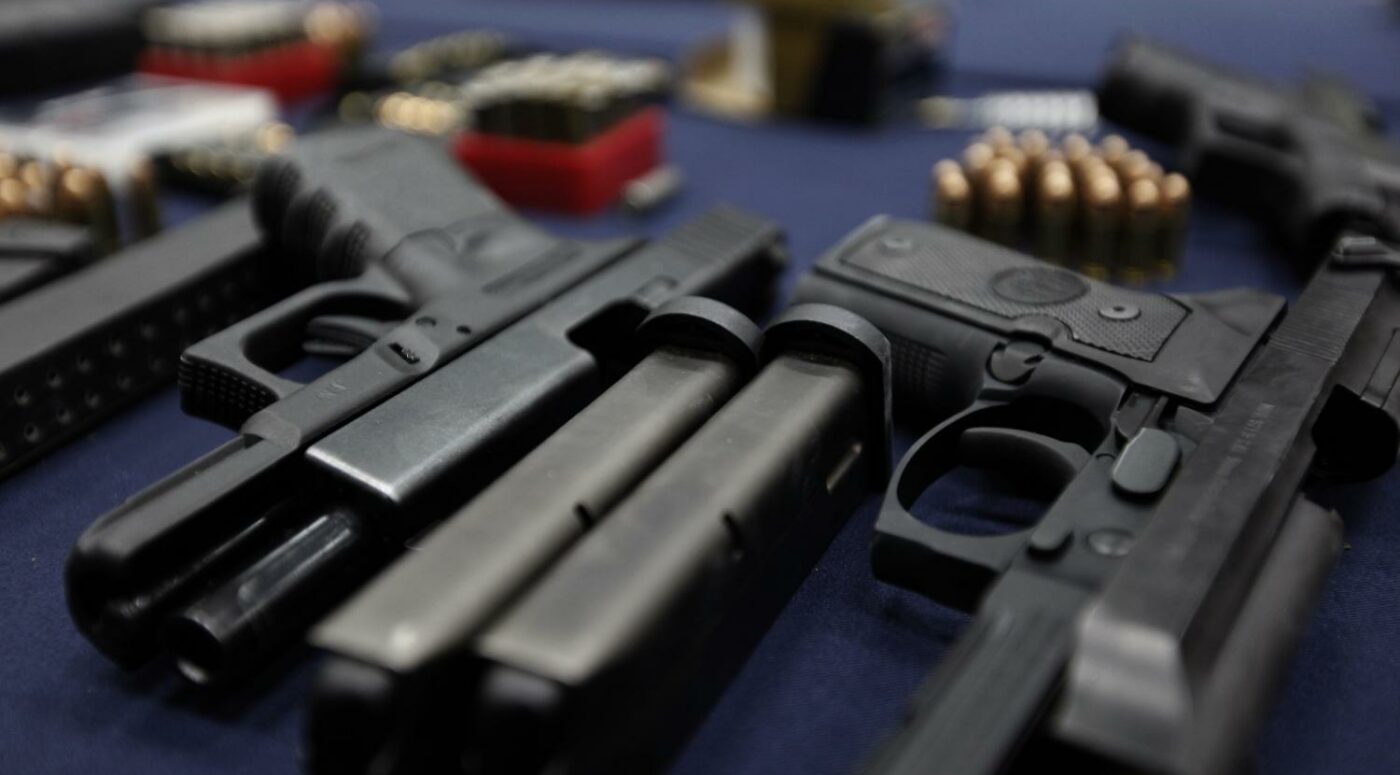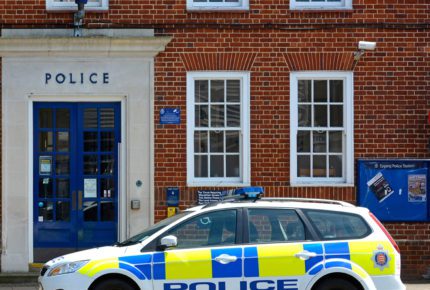

If you have been arrested or charged in relation to possession of a prohibited firearm in England and Wales, this article is for you. Firearms legislation is technical and complex. Small differences in the composition of a firearm could mean the difference between one that can be licensed, and one that is prohibited.
The article unpacks the offences under Section 5 of the Firearms Act 1968, which pertain to the possession, purchase, or acquisition of prohibited firearms. You should walk away with a clearer understanding of the law surrounding prohibited firearms in England and Wales. Remember, though, there is no substitute for instructing a criminal defence solicitor to represent you in your case.
What is the definition of a firearm?
A firearm is defined at Section 57(1) of the Firearms Act 1968 as a lethal barrelled weapon or a prohibited weapon. It also includes a relevant component part of such a weapon, such as a barrel, chamber, cylinder, frame, body or receiver, or a breech block, bolt, or other mechanism for containing the pressure of discharge at the rear of the chamber.
Which weapons are prohibited by Section 5 of the Firearms Act 1968?
Section 5 of the Firearms Act 1968 sets out categories of firearms that are prohibited. These include:
- any firearm which is designed or adapted so that two or more missiles can be successively discharged without repeated pressure on the trigger
- any self-loading or pump-action rifled gun other than one which is chambered for .22 rim-fire cartridges
- any firearm which either has a barrel less than 30 centimetres in length or is less than 60 centimetres in length overall, other than an air weapon, a muzzle-loading gun or a firearm designed as signalling apparatus
- any self-loading or pump-action smooth-bore gun which is not an air weapon or chambered for .22 rim-fire cartridges and either has a barrel less than 24 inches in length or is less than 40 inches in length overall
- any smooth-bore revolver gun other than one which is chambered for 9mm. rim-fire cartridges or a muzzle-loading gun.
- any rocket launcher, or any mortar, for projecting a stabilised missile, other than a launcher or mortar designed for line-throwing or pyrotechnic purposes or as signalling apparatus
- any air rifle, air gun or air pistol which uses, or is designed or adapted for use with, a self-contained gas cartridge system
- any rifle with a chamber from which empty cartridge cases are extracted using energy from propellant gas, or energy imparted to a spring or other energy storage device by propellant gas, other than a rifle which is chambered for .22 rim-fire cartridge
- any weapon of whatever description designed or adapted for the discharge of any noxious liquid, gas or other thing
- any device (commonly known as a bump stock) which is designed or adapted so that it is capable of forming part of or being added to a self-loading lethal barrelled weapon, and if it forms part of or is added to such a weapon, it increases the rate of fire of the weapon by using the recoil from the weapon to generate repeated pressure on the trigger.
- any cartridge with a bullet designed to explode on or immediately before impact, any ammunition containing or designed or adapted to contain any such noxious thing
- any grenade, bomb (or other missile), or rocket or shell, which can be used with a firearm and which is designed to explode
What actions constitute an offence under Section 5 of the Firearms Act 1968?
It is an offence to possess, purchase, or acquire any of the prohibited weapons listed above. It is also a criminal offence to possess, purchase or acquire:
- Any firearm disguised as another object
- Any rocket or ammunition that consists in or incorporates a missile designed to explode on or immediately before impact and is for military use, and any launcher or projecting apparatus designed to be used with such a missile
- Ammunition for military use designed:
- so that a substance will ignite before impact; or
- to penetrate armour plating, screening or body armour; or
- to be used with a pistol that incorporates a missile designed or adapted to expand on impact
Manufacturing or selling a prohibited weapon or ammunition without written authority from the Secretary of State is also prohibited under Section 5(2A) the Act.
Is it an offence to possess an imitation firearm?
An imitation firearm is defined in the 1968 Act as ‘any thing which has a the appearance of being a firearm (…), whether or not it is capable of discharging any shot, bullet or other missile.’ This definition does not include any weapon of designed or adapted for the discharge of any noxious liquid, gas or other thing.
According to Section 1(1) of the Firearms Act 1982, it is an offence to possess an imitation firearm that is readily convertible into a functioning firearm. ‘Readily convertible’ is defined as a firearm that can be converted without any special skill, tools, or equipment. It is a defence if the defendant can show that he or she did not know and had no reason to suspect that the imitation firearm was readily convertible into a firearm.
CPS guidance highlights cases occurring in relation to the Olympic BBM, which can be readily converted into a firearm capable of discharging ammunition. The guidance explains that depending on the circumstances, offences occurring in relation to this firearm may fall under Section 1 of the Firearms Act 1968 (firearms for which a firearms certificate is required) or Section 5 (prohibited firearms).
For example, if it has a barrel of less than 30cm or overall length less than 60cm and is not an air weapon, muzzle-loading gun or signal loading apparatus, it would be considered a prohibited firearm under Section 5.
What is the sentence for possessing a firearm prohibited by Section 5 of the Firearms Act 1968?
The Sentencing Council has published new guidelines, effective January 2021, in relation to the possession, purchase, or acquisition of a prohibited weapon or ammunition. Depending on the nature of the weapon or ammunition possessed this may be an indictable only offence (where it must be heard in the Crown Court) or triable either way (where it could be heard in the Magistrates’ Court or the Crown Court, depending on the seriousness and complexity of the case and the choice of the defendant). The maximum sentence is 10 years’ imprisonment. The minimum sentence is a discharge.
When deciding upon the appropriate sentence, the court will consider the culpability (blameworthiness) of the defendant, and the level of harm that has been caused. When determining culpability, the court will consider how dangerous the firearm is.
The most dangerous firearms are considered to be those that are capable of killing two or more people in rapid succession. The least dangerous weapons are those that are not designed to be lethal. The court will also consider whether the firearm was produced or used for a criminal purpose, whether it was loaded, and whether the defendant used or intended to use it.
The court will then consider the harm caused by the possession of the firearm, including the alarm/distress caused, whether there was a high risk of death or serious physical or psychological harm, or a high risk of serious disorder.
Depending on the court’s assessment of culpability and harm, you could face a sentence of between either years’ imprisonment and, at the lower end of the scale, a community order or a fine. The approach taken by the court will vary hugely depending on the circumstances in which the defendant was in possession of the firearm. For example, the possession of a missile launcher by a terrorist group would be treated more harshly than the possession of an adapted air rifle for use hunting animals.
The sentencing guidelines highlight that there is evidence that Black, Asian, and other minority ethnic offenders are sentenced more harshly for this offence than their white counterparts. The guidelines remind sentencers of the information and guidance in the Equal Treatment Bench Book, which provides information in respect of how to treat defendants fairly. Having a criminal defence solicitor in whom you trust can be of great assistance at the sentencing stage. Your solicitor can help you put forward a plea in mitigation, highlighting factors that you would like the court to take into account when sentencing you.
Where to get further help
If you have been charged with an offence under Section 5 of the Firearms Act 1968, take any impending action against you seriously, as such action could result in a hefty sentence. Instructing the right solicitor who takes the time to prepare a robust defence could make all the difference. Our experienced team of criminal defence solicitors are ready to help you, so please contact us to arrange a no obligation consultation.

